I’ve been admiring 8BitDo’s gaming accessories from afar for quite some time now, but I didn’t expect the brand to release a robust, comfortable and premium quality keyboard; let alone one styled after my favourite retro computer. For me, the original Commodore 64 (or ‘Breadbin’) and its later models typify the 80s computing experience. Beige case, brown keys, a bright red LED and a chunky feel is what I often miss in this age of black identikit low profile keyboards. For me, the 8BitDo Retro Mechanical Keyboard C64 Edition is a match made in retro heaven – a sensibly-priced mechanical keyboard with a solid build and lots of faithful design nostalgia value. Read on for my full review.
Pros
- Faithful C64 styling on top of a solid chassis and robust plastics
- Contoured keycaps and mechanical switches give a responsive tactile feel
- Extra programmable Dual Super Buttons and microswitch Super Joystick are useful extras for gamers
Cons
- US layout brings a couple of minor annoyances with the @ and “ characters
- Joystick and button controller aren’t wireless – they plug into the keyboard
| Size | 376.6 x 169.6 x 46.8mm (keyboard), (Dual Super Buttons)160.2 x 74.6 x 32.3mm, 75 x 75 x 80mm (Super Stick) |
| Connectivity | USB-C, Bluetooth, wireless (via dongle) |
| Backlighting | None |
| Switches | Kailh box white switches v2 |
| Battery | Rechargeable lithium polymer battery (included) |
8BitDo Retro Mechanical Keyboard C64 Edition review
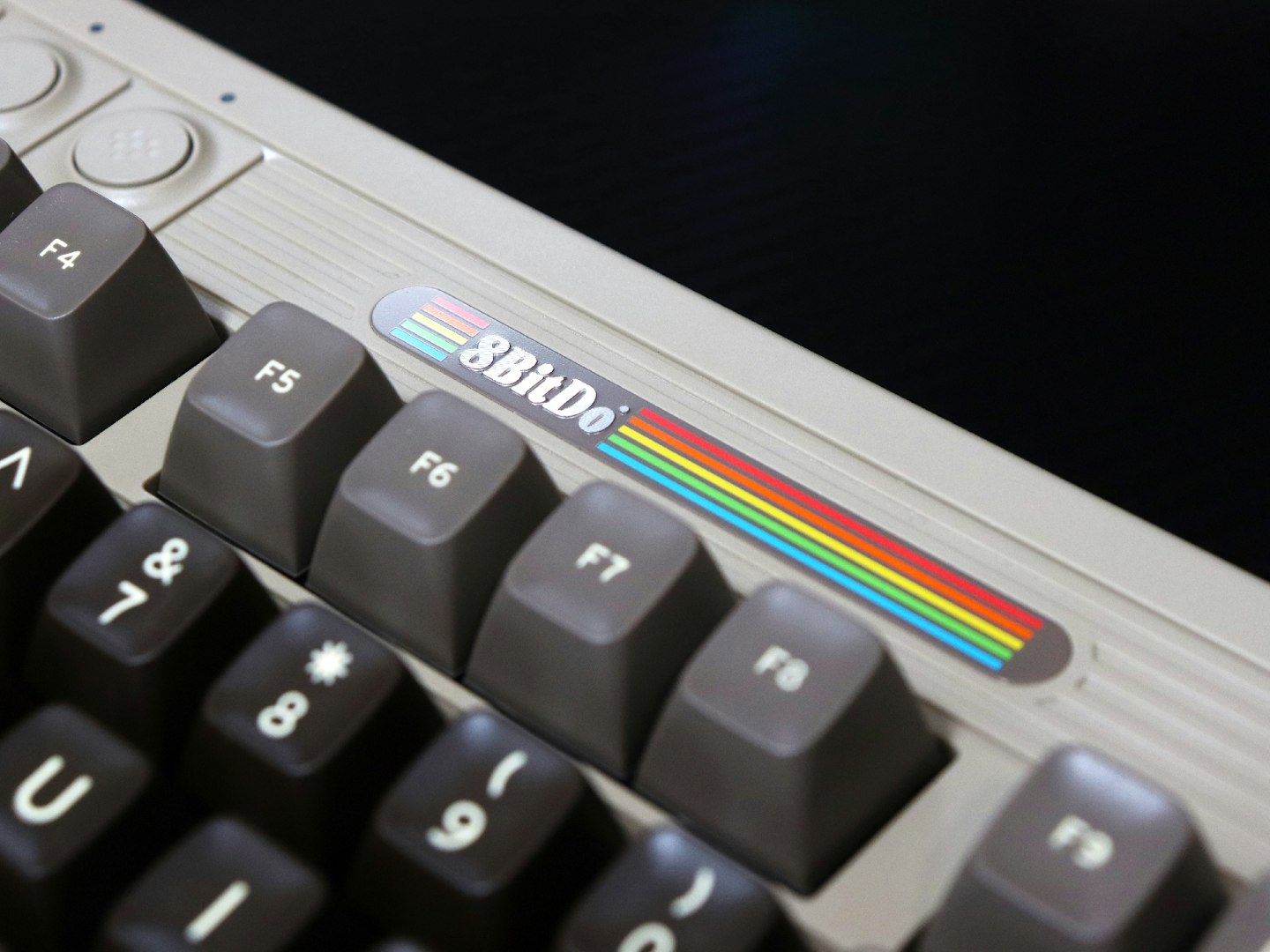
This is not the first 87-key retro-inspired keyboard that 8BitDo has released. There’s been one styled after the original NES console, and one that has the classic two tone grey keys seen on IBM PC keyboards from back in the day. But, I love this one the most. The colour scheme alone screams Commodore, but the small addition of the red power LED, horizontal inset stripes and a C64-styled 8BitDo logo seals the deal. There’s a small microswitch joystick and a programmable dual ‘Dual Super Buttons’ controller for anyone looking to fire up their retro gaming emulator, too.
Yes, this is a keyboard aimed squarely at C64 and retro tech fans like me, but of course it has a job to do. For a tenkeyless hot-swappable mechanical keyboard under £100 I think it’s impressive. The keycaps on this version share the a slightly concave profile of the original C64, making for a very positive, tactile typing experience. Key travel on the Kailh Box White Switches V2 is responsive and the addition of N-key rollover means that you can press several keys for shortcuts or gaming combos without ghosting – making it a great alternative to most gaming keyboards.
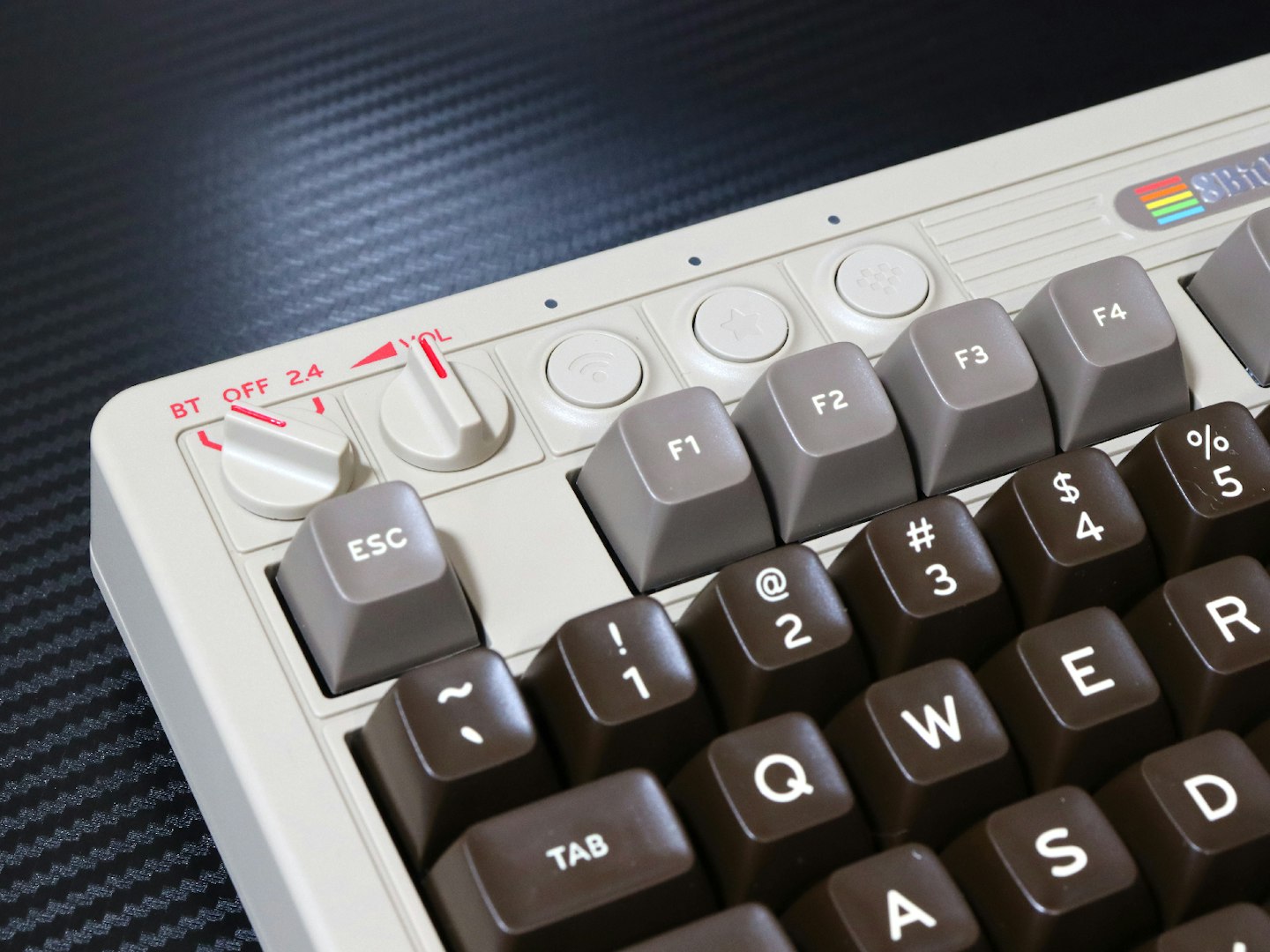
However, perhaps the best features of all are the rechargeable battery, volume control dial and its ability to switch between Bluetooth and Wi-Fi connections. Yes, I really appreciate this for its retro styling, but the keyboard itself is a pleasure to use and, as a writer, it could well become my daily driver.
Verdict: A retro 80s computing classic that manages to deliver both style and substance. You don’t have to be a gamer to appreciate its charms as a mech keyboard sporting an iconic design.
What’s good?
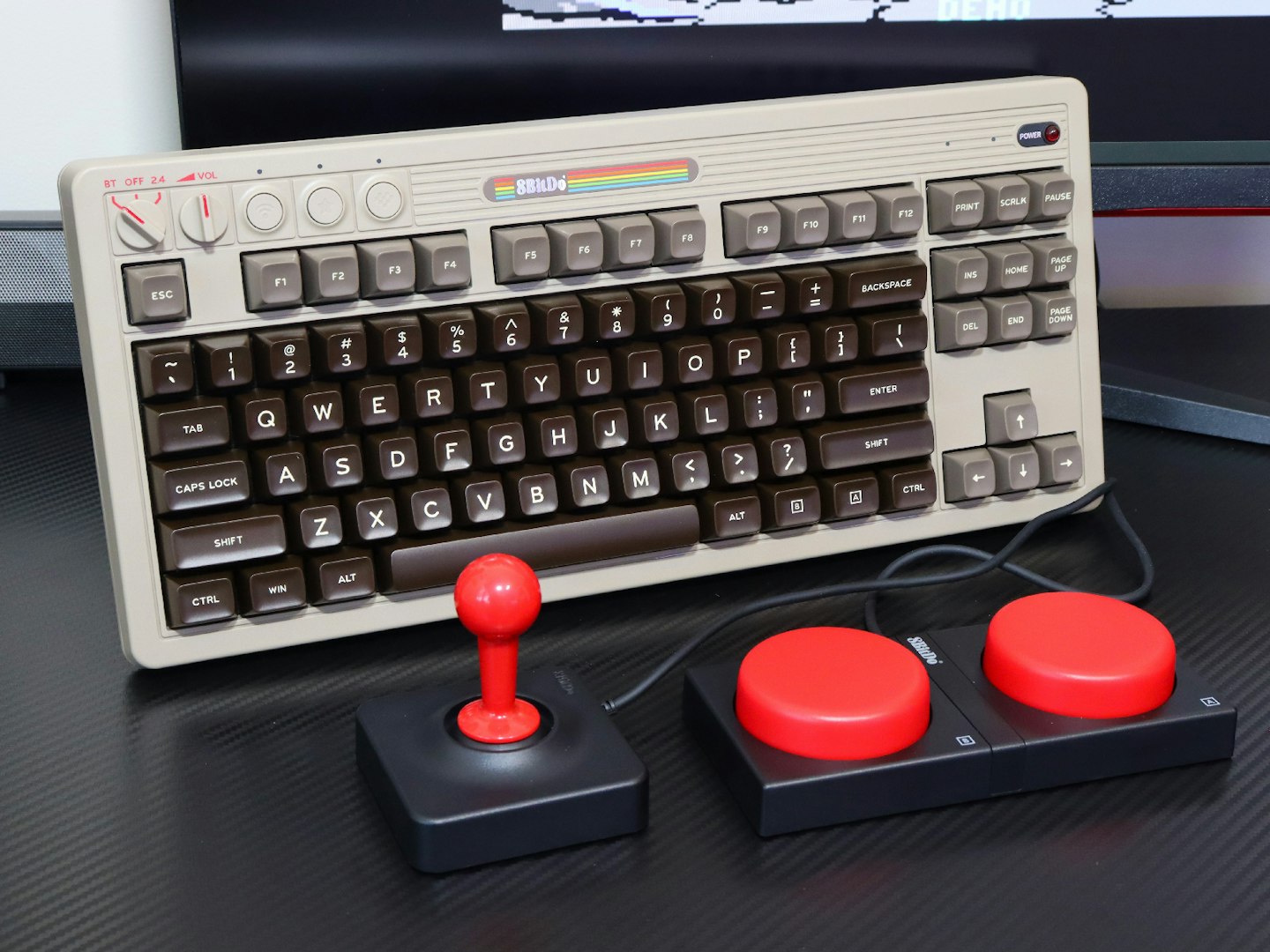
I think that if you’re going to take design cues from something as iconic as the original Commodore Breadbin for a tenkeyless keyboard, you have to nail a few key things – and 8BitDo has done just that. It’s a great keyboard for typing first, and a homage to personal computers of old second. And that shows in the overall build and performance. The key travel is smooth and the clicks aren’t intrusive like some other keyboard switches. I particularly like the concave contour of the keycaps – they make for a really secure feel as you type and I found I made fewer typos than I do with low profile chiclet keys.
The build is reassuringly solid, weighing in at over one kilogram. That gives this keyboard a premium feel, lots of stability on the desktop, and the ABS plastic and overall finish seems like it’s built to last. Connectivity was fast, easy and reliable; plus I like that the USB dongle for wireless connectivity docks neatly on the underside, too.
Lastly, as if the keyboard itself wasn’t already great value, the 8BitDo Retro Mechanical Keyboard comes with a small microswitch joystick and a programmable two-button controller. They’re solidly-built practical additions to what is already a fantastic package for anyone looking to bring a dash of nostalgia to their desktop.
What’s okay?
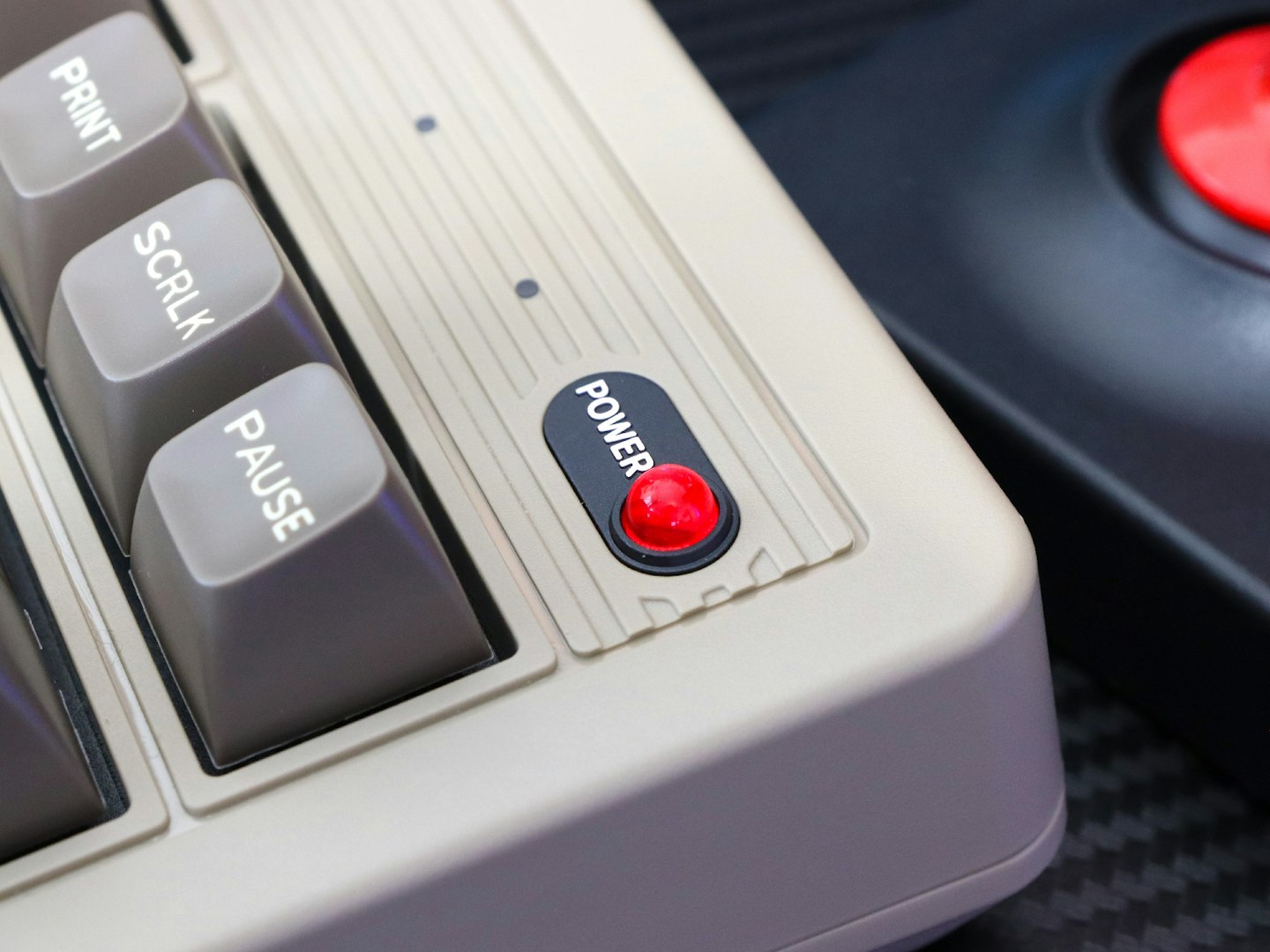
Although the build quality of the keyboard itself is excellent, I do find the feel of the buttons on the external two-button controller a little lightweight. How long they would last if you hit them a few hundred times while playing BomberMan or Green Beret is anyone’s guess, but I’m more inclined to program them for more occasional functions, like copy and paste or as a handy way of opening my favourite applications. As an aside, the fact that the keyboard makes it easy to set and save these shortcuts as a custom profile is a bonus – as is the ability to save various profiles using the companion software.
I happen to like the switches that this comes with as standard, but I do wish that 8BitDo would allow other switch options at checkout. Its a small nitpick, but doing a complete keyboard switch change right out of the box might be a deal breaker for some.
There’s no backlighting to this keyboard, which might put off some gamers who are used to customising their RGB colour scheme – but I think that’s more than okay. In my opinion it would take something away from the retro styling and add a feature that many people hardly use or actually need in terms of being able to see the keys in the dark.
Any negatives?
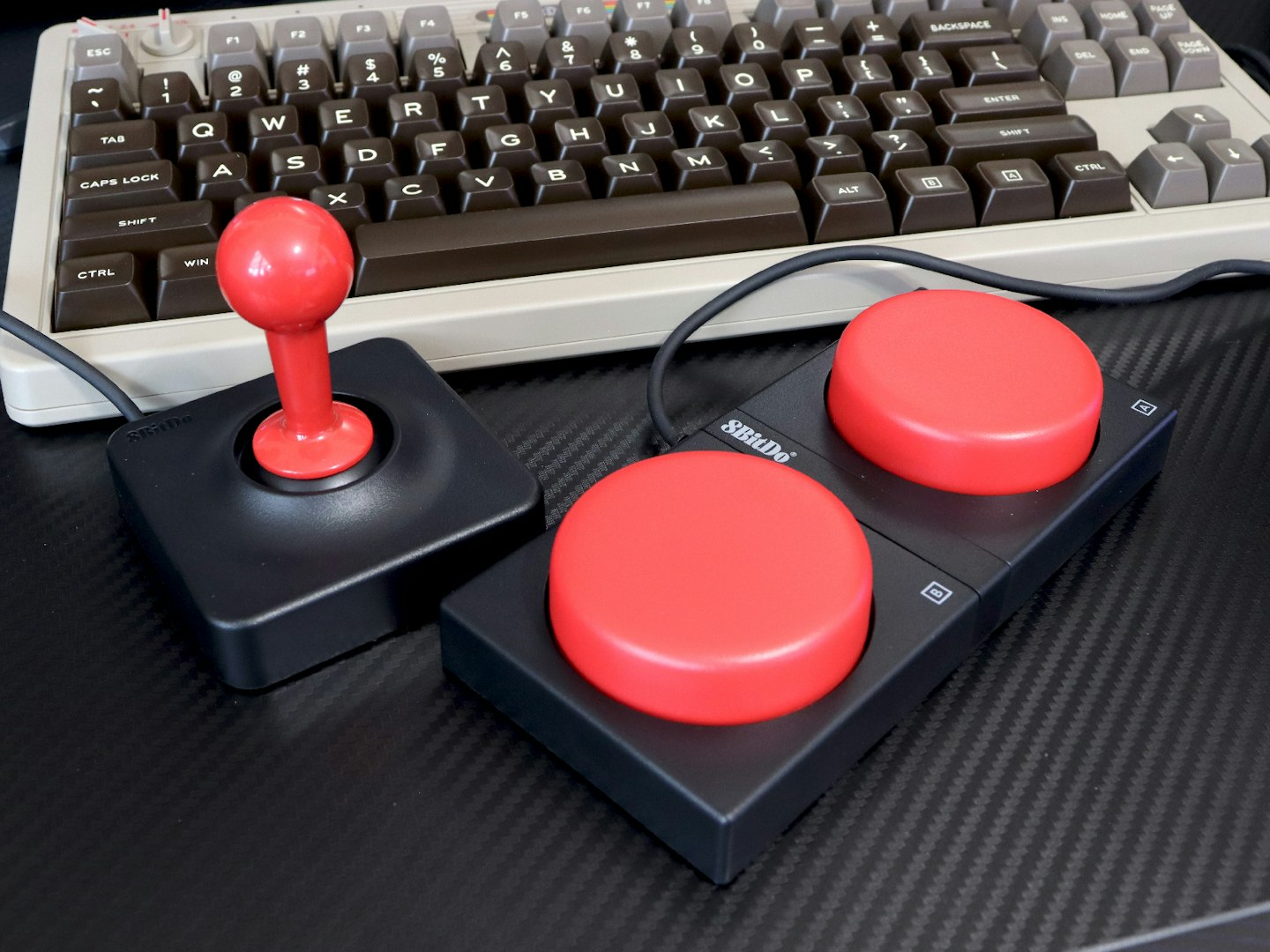
Given that the keyboard itself is wireless and battery-powered, I do wish that the joystick and button controller were connected to the keyboard over Bluetooth instead. That would make for a much neater retro gaming setup. That said, wireless didn’t exist in the days of the Commodore 64, so you could argue it’s more faithful to have wires all over the place. For me, though, this is one area where I wouldn’t have minded a more 21st century approach.
Lastly, regarding the “ and @ keys – as the 8BitDo Retro Mechanical Keyboard only comes with a US layout, you’ll need to get used to the keycap labels being the wrong way around if you’re used to using a UK layout. And, like some tenkeyless boards, the \ (backslash) key isn’t available at all. But, as it’s a little-used character for most, it’s not a huge issue.
More items to consider
If you’re more of a retro console fan than A C64-er, 8BitDo also offer this tenkeyless model styled after the Nintendo Entertainment System. I think it’s a more generic retro look than the C64 Edition, and it doesn’t come with the joystick. But, if you like the build and spec of the latter but just want it to evoke those days spent playing the first ever Mario platformer on the NES, this is the keyboard for you.
As I mentioned at the start of my review, 8BitDo are about to release a subtle non-gamer take on the retro keyboard vibe with this M Edition. Its the same spec as the others here, but takes its cues from the IBM grey and off-white keyboards that came with many PCs in the 90s. It also comes with the Super Buttons controller, but not the joystick. It can be pre-ordered now and is due for release at the end of August 2024.
If you’re looking for a more general retro look without evoking one particular system or console, this Perixx Periboard-106M keyboard is just like the standard full-size keyboards you’d get with a typical PC system in the 90s. Rather than just being cosmetically styled like one, it’s actually a dead-ringer for a vintage model-M in almost every way. It’s not mechanical, though.
Who tested it?
Chris Duffill is a senior tech specialist for What’s The Best. He’s an avid gamer and retro games enthusiast who has owned everything from the original Commodore 64, ZX Spectrum, N64, SNES and many more. As a professional writer he’s also choosy when it comes to keyboard design and function. He prefers linear or (softly) clicky mechanical keys with plenty of travel, and – despite liking the Logitech Wave Keys he reviewed – prefers a traditional non-ergonomic layout.
How the product was tested
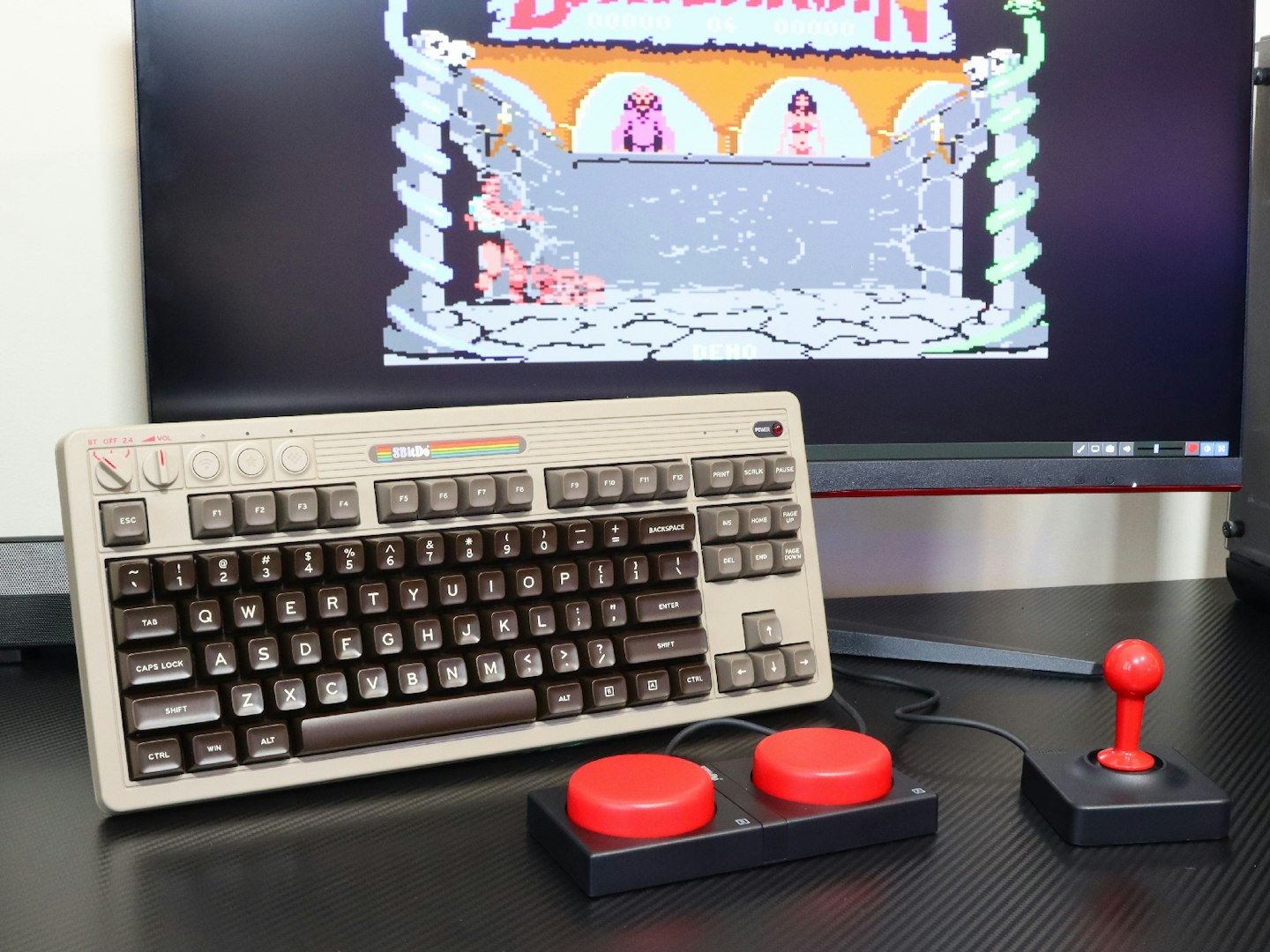
I’ve owned the 8BitDo Retro Mechanical Keyboard C64 Edition since launch and it’s been used daily for both gaming and writing. It’s been connected to my PC via 2.4GHz Wi-Fi, to my iPad and laptop via Bluetooth. I also connected it to my TheC64 maxi via USB to test it with text adventures. The joystick and customisable buttons were used on my PC with retro games played in DosBox and a C64 emulator, and the programmable shortcuts were tested with standard PC keyboard shortcuts like copy and paste.
Why should you trust us?
At What's The Best, our mission is to provide accurate and reliable reviews, ensuring our readers receive honest and transparent information about the best technology products available. Anything less would undermine our commitment to being a trusted source of unbiased product information.
Our dedicated in-house writing team comprises experts with extensive experience and a genuine passion for technology. Collectively, we have spent decades testing and writing about tech, leveraging our expertise in all our articles, advice pieces and reviews.
We maintain complete editorial independence and do not accept payment for product reviews. Our writers have full control over their content, ensuring that products are selected based solely on the needs of our readers. While we may earn commissions or other compensation from links on our website, this never affects our product choices. These links enable us to continue offering valuable consumer advice, without compromising the integrity of our reviews.
How we test products at What's The Best
Real people, real reviews and trusted buying advice.
Tired of confusing tech reviews? At What's The Best, we cut through the jargon with down-to-earth product evaluations. Our team of experienced reviewers puts everyday gadgets to the test, using them just like you would. We don't waste time on unrealistic scenarios; instead, we focus on real-world performance that matters to consumers.
This means unbiased buying advice you can trust. We only review products that are significant and relevant, so you can be sure you're getting the latest insights. Haven't seen a review for what you're looking for? Don't worry, we're constantly adding new products to our growing catalogue.
For in-depth details on our testing process, visit our dedicated tech and electronics how we test page.
Chris Duffill is a Senior Tech Writer and Reviewer for What's The Best. His background includes writing, editorial, marketing, design, video production and photography.
He specialises in home entertainment and audiovisual tech, including speakers, amplifiers, turntables, streaming media players, and TVs. He is also one of our resident experts in computing (PCs, tablets, smartphones, smartwatches), DSLR photography and all kinds of digital cameras. He also writes about retro gaming, game consoles and various electronic gadgets. If it plugs in, lights up or makes a noise, he’ll write about it.
Subscribe to the What’s The Best Newsletter to keep up to date with more of the latest reviews and recommendations from the rest of the What’s The Best team.
















